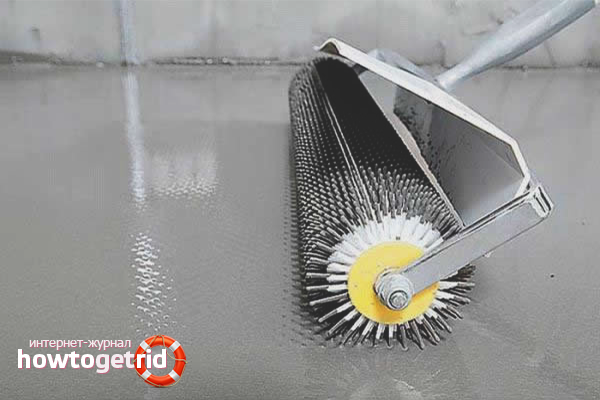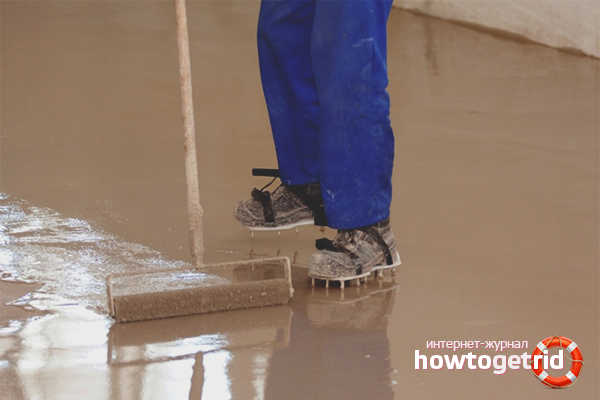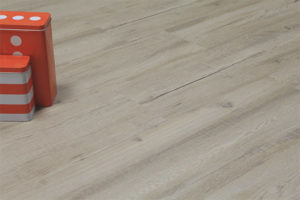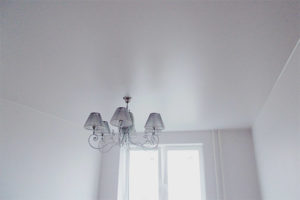The content of the article
Many of us are a little perfectionist. We want everything to meet certain standards. This also applies to repairs in the house, and in particular, floors, which in this article will be a key element. There is a huge amount of floor materials. Each of them has its advantages and disadvantages. However, especially against the background of the rest, the bulk floor is different. Its main advantages are that it perfectly levels the surface. It is also suitable as a topcoat. Such a floor can be made in any color or even have a complex pattern. And the main design novelty is 3D floors.
Everything is clear with the design. There is no limit to colors and patterns. Therefore, let's get down to business immediately and find out how to fill the bulk floor with your own hands.
Beginning of work
All construction work begins with preparation, the application of a jellied floor is no exception. The first step is to inspect the surface for serious differences in height. If any, you should deal with them with a jackhammer.
Done? Fine. We move on, but the inspection has not yet ended. Now we are looking for cracks. And if even a small gap was discovered, it should be repaired with special dry mixtures. You can also make a new concrete screed, which is then treated with a primer and other special tools. This will give the coating extra strength.
At the same time, do not forget that with changes in temperature and humidity, the screed can be deformed. To minimize this effect, around the entire perimeter of the room should stick a foamed deformation tape. In the end, when the bulk floor has dried, this tape will need to be cut. And close the formed cracks with sealant.
Fill Conditions
When filling the floor, you must adhere to certain conditions. This primarily relates to temperature. The readings on the thermometer should not fall below +15 degrees. If the temperature is lower, the material consumption increases significantly. However, high temperatures also have a negative effect. They speed up the freezing process, so you will have less time for work.
All windows and doors in the room must be closed so that there is no draft in the room. However, this is not all. The moisture content of the concrete base should not exceed 4%. If the indicator deviates upward, the surface should be treated with a second layer of waterproofing.
Does everyone know the role of a primer? If not, read the following sentence. Primer for cement or concrete base is designed to improve adhesion. If you use a cement-sand screed, an ordinary primer is quite suitable. But with a concrete base, it will not "ride", you will need to buy a special primer. It can be applied using a roller and brush (in hard to reach places). If the screed is too porous and dry, repeat the procedure. But only after the first layer has completely dried.
And now a very useful feature will be “burned”. The fact is that most of the above procedures can be dispensed with. No, this does not mean that polymer floors can be poured onto an unprepared base with cracks, pits and knolls. No way! However, a self-leveling concrete screed can be used. After drying, the floor will become perfectly flat. Another advantage of such a leveling system is that the floor practically ceases to absorb moisture. In the case of bulk floors, this is especially beneficial. But still need to be primed.
Necessary materials
The pouring of the bulk floor should be fully equipped. A pair of brushes cannot be dispensed with, however, you should not be afraid, as the set is quite standard. So you will need:
- Wide spatula. It will be required for the preliminary distribution of the total poured mass.
- A needle roller that removes all air bubbles that appear.
- Construction mixer for mixing the mixture.
- Materials for preliminary repairs.
Also, do not forget about the special sole, which is attached to the shoes. It is made in the form of high spikes. Thanks to her, footprints do not remain on the floor, and shoes do not have to be thrown out.
The main work
So, is your floor perfectly flat and the tools neatly folded and ready to use? Fine! Getting to work. You are unlikely to be able to find a bulk floor from two different manufacturers with an absolutely identical composition. Therefore, giving universal advice on mixing components is pointless. Therefore, to begin with, you should carefully read the instructions attached to the product, so that at the very beginning it does not spoil everything.
When the mixture is successfully cooked, pour it onto the floor. But only without sudden movements. If liquid gets on the wallpaper, the wall covering will have to be changed along with the floor. It is easier to remove traces from the tile, but also very problematic. Therefore, we do everything calmly.
Next, using a spatula, the mixture should be evenly distributed throughout the room. By the way, the future floor should be poured near the far wall from the door. Also do not forget about studded tips for your shoes. If this is your first time encountering such an experience in repairing premises, it is best to take a notched trowel. With it, you can more evenly distribute the composition.
Distributed? See air bubbles? So, they should not be. To get rid of them, you need to walk around the room with a needle roller.
Paul is almost ready. Now it remains just to wait for it to dry. Usually you can walk on it in ordinary shoes in a day. However, you should not rush with the arrangement of furniture. The coating can fully withstand severe loads only after 3 days. But it is worth considering that these terms are conditional. As already mentioned, the composition of the material is always different. And not only the mixing method, but also the pour time depends on this.
How to make 3D floors
If monophonic options of bulk floors do not suit you, make them in 3D. Of course, this option will give the design of the room originality and uniqueness. However, it is worth stocking up on forces, because the process of their installation is more painstaking. If you are not afraid of difficulties, read on.
To make a 3D floor, you need to do the same manipulations as when applying ordinary material. That is, pour out the liquid, distribute it around the room, remove the air bubbles and wait for it to dry completely. However, this is only part of the job.
Next, you will need a special large format printing that will stick to the floor. The procedure is somewhat reminiscent of wallpapering, since it is important that in the end there is not a single fold or a single air pocket. Instead of printing, you can also use various items, such as coins.
Now the last step remains - the application of varnish. It will extend the life of the floor and protect the drawing from erasure. And if any decorative elements are used, the varnish will securely fix them.
Regardless of which floor you make, 3D or conventional, the result will be perfect. However, if the whole process described above seemed complicated to you, use the services of a specialist.
Video: bulk floor - the secrets of craftsmanship












Submit